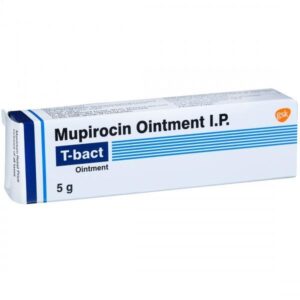MUPIROCIN
MUPIROCIN: Mupirocin is a topical antibiotic drug used to treat bacterial skin infections. It is primarily used to treat impetigo, a contagious skin infection caused by certain bacteria.
The mechanism of action of mupirocin involves the inhibition of bacterial protein synthesis. It specifically targets and binds to bacterial isoleucyl-tRNA synthetase enzyme, thus preventing the incorporation of isoleucine into protein chains within bacterial cells. This disruption of protein synthesis ultimately leads to the inhibition of bacterial growth and the eradication of the infection.
Mupirocin is available in various forms, including ointment and cream. For impetigo, it is typically applied three times a day directly to the affected area. Before applying, it is important to clean and dry the area thoroughly. The duration of treatment may vary depending on the severity of the infection, but it is generally recommended to continue using mupirocin for a few days after the symptoms have disappeared.
Common side effects of mupirocin include burning, stinging, itching, redness, and dryness at the application site. These side effects are usually mild and temporary. In some cases, allergic reactions such as rash, swelling, and difficulty breathing may occur, although they are uncommon.
It is important to note that mupirocin is for external use only and should not be ingested or used in the eyes, nose, or mouth. It is also recommended to avoid applying mupirocin to large areas of broken or damaged skin, as it is absorbed systemically and can lead to systemic effects.
As with any medication, it is crucial to follow the prescribed dosage and duration of treatment as directed by a healthcare professional. If any severe or persistent side effects occur, it is important to seek medical advice.



